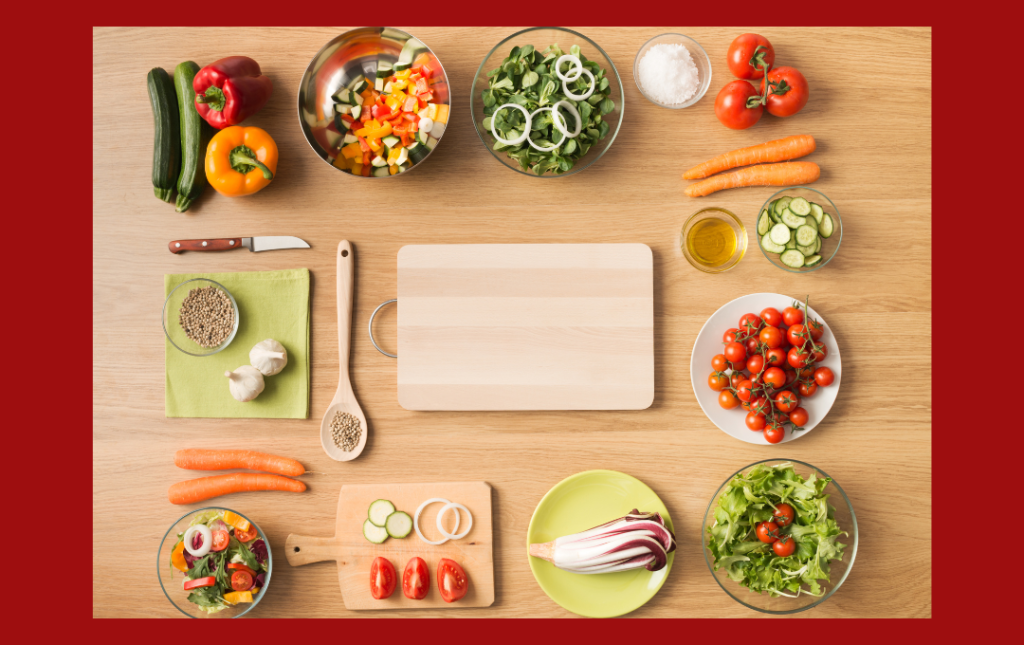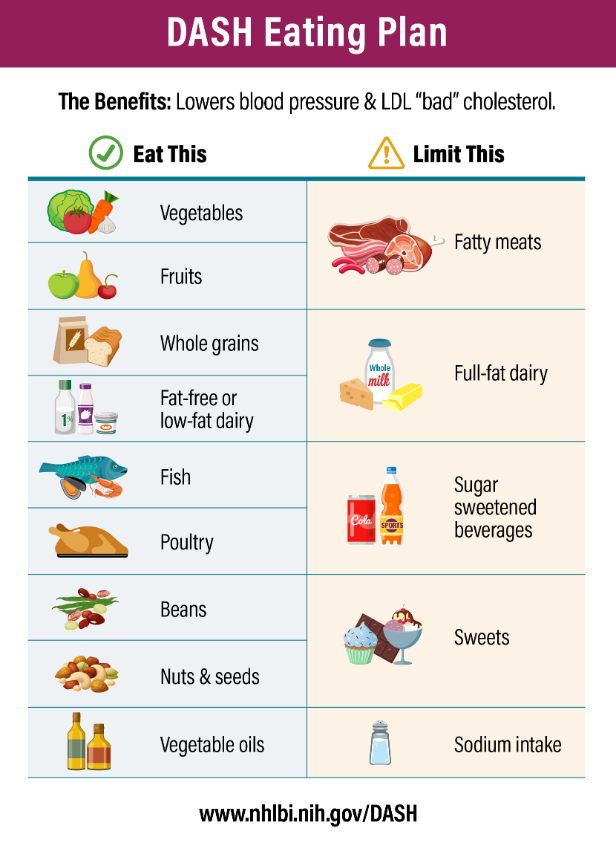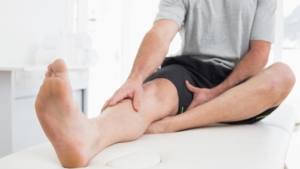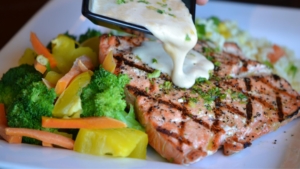You are what you eat—and rightfully so— because whatever you decide to put inside your body determines your overall health outcome. According to an article published recently by the Center for Science in the Public Interest, 678,000 people in the U.S. died from diseases caused by obesity and poor eating habits, such as vascular disease and type 2 diabetes.
In addition, obesity rates in adults have doubled just in the last 30 years. It is a well-known fact that the U.S. has some of the worst diets in the world which contributes to elevated health issues.
In the United States, over 8.5 million people over the age of 40 have peripheral artery disease (PAD), a vascular disease caused by plaque buildup within the arteries of the lower legs. To no surprise, this plaque buildup is often caused by poor lifestyle such as little to no exercise, obesity, diabetes, high cholesterol or blood pressure, as well as a family history of arterial disease. Evidence suggests that a diet with insufficient or imbalanced nutrients can enable the development and progression of PAD.
Your eating habits can affect your body over time; therefore, it’s crucial to start making healthier choices. However, if you wait too long, lifestyle changes may not be enough.
Diet Options To Combat Peripheral Artery Disease
According to the American Heart Association (AHA) guidelines, people with peripheral artery disease and other vascular or heart-related conditions should follow the following dietary recommendations: in their daily food intake:
- Reduce saturated fats to no more than 5% to 6% of total calories.
- Restrict sodium intake to no more than 1.5 to 2 grams per day.
- Restrict sodium intake to no more than 1.5 to 2 grams per day.
Some diets centered around preventing or decreasing the progression of cardiovascular disease reviewed by AHA and the American College of Cardiology revealed that consuming the suggested quantity and food can have positive effects. The suggested diets include:
- The DASH (Dietary Approaches to Stop Hypertension)
This diet limits sodium, overall fat intake, and alcohol consumption. Strong evidence suggests that this dietary modification is effective in reducing hypertension, cardiovascular disease risk, and cardiovascular disease progression.
It’s a recommended diet for patients with PAD.
- The Mediterranean diet
This diet increases good cholesterol (HDL-C) better than low-fat diets and can improve quality and life span. This diet primarily consists of high proportions of:
- Olive oil.
- Legumes, such as peas, beans, and lentils.
- Whole grains.
- Fruits and vegetables.
- Nuts.
- Fatty fish.
- The low-fat diet
This diet can improve life quality and expectancy if you have cardiovascular disease. Once again, as with the other diets noted above, this diet has not specifically been compared exclusively in those with PAD.
- The low carbohydrate diet
This diet — especially when added to a low-fat diet — can reduce triglycerides and increase good cholesterol levels. These are highly recommended for people with PAD, and following this diet can result in reducing your overall cardiovascular risk.
However, it is important to consult a dietician or nutritionist before adopting any of the diets or meal plans.
How Do Certain Foods That Clog Your Arteries Increase Your Risk for PAD?
Cholesterol is one of the many factors that can contribute to PAD. Cholesterol plaques start developing in the walls of arteries as soon as you start eating solid foods. Long before they can be called plaques, hints of atherosclerosis can be found within the arteries, sticking to the walls and growing over time.
Even some adolescents have been found to have cholesterol buildup in their arterial walls. When doctors see the beginning stages, they can be precursors of cholesterol plaques. Unfortunately, this early onset of cholesterol plaque is not easily detected by tests.
Everything you eat can contribute to plaque buildup. That’s why at an early age, children and young adults are taught to avoid foods that clog arteries and indulge in nutritional foods instead; however, it’s never easy to enforce once they get older.
How Does Food Affect Your Risk of Peripheral Artery Disease?
Foods that are high in sodium, saturated fats, and/or sugar can cause plaque buildup as well as high blood pressure. This ultimately can lead to an accumulation within your arteries, which could potentially lead to PAD. It’s important to be aware of what foods cause clogged arteries and what you are putting in your body.
As we mentioned above, cholesterol plaque stays in your body for years, so it’s critical to eat a balance of clean foods to lower your risk of heart attack, stroke, or amputation.
What Foods Cause Clogged Arteries?
According to a recent report published by the Office of Disease Prevention and Health Promotion, 71% of people living in the U.S. have intakes of saturated fat above the recommended limit. If you are concerned about increasing your risk of PAD by the kinds of foods you choose to eat during the day, start by understanding what foods and beverages to avoid. We’ve compiled a list of what foods cause clogged arteries and what drinks to avoid, especially if you are diabetic, overweight, or have a family history of vascular disease.
Food to Avoid
- Coconut or palm oils
- Whipped cream
- Fatty meats like ribs, pork chops, ribeyes, etc.
- Bacon
- Processed lunch meat
- Hot dogs, summer sausage, kielbasa, etc.
- Desserts rich in dairy or sugar
- Whole milk
- Fried foods
- Fast food
By avoiding foods that clog arteries, you can help reduce the impact they will reek on your arteries. Always check your labels and think how much processing goes into their creation before consuming. In addition, never add butter or coconut oil to foods; always try to choose olive, avocado, or sunflower oil instead.
Beverages to Avoid
- Shakes or smoothies with excess sugar or rich dairy fat
- Alcohol
- Most juices found at the store
- Sugary coffee drinks
- Carbonated soda waters
- Soda
- Seltzers
According to Healthline, researchers found that middle-aged as well as older adults who drank sugary beverages daily, were at a greater risk for developing elevated cholesterol levels than those who refrained from sugary beverages.
How to Choose Foods to Decrease Plaque Buildup
If you’re looking to find foods that you can eat without raising your cholesterol too much, you’ve come to the right place. Picking healthy options can be daunting, but once you start checking nutrition facts, recording your diet, drinking water, and avoiding sugary beverages, it will become easier. Whether you have been limiting foods that clog arteries already, or are just starting, here are a few options you can try:
- Use avocado, olive, or sunflower oil instead of coconut oil
- Add fruits like lemons, limes, and blueberries to your water instead of soda
- When baking, use honey or agave instead of sugar
- Swap out pre-packaged lunch meat for sliced turkey or chicken at home
- Add legumes, nuts, and berries to your diet
- Try whole grains instead of processed white bread
Clean eating can be key to slowing the progression of plaque accumulation that can lead to peripheral artery disease. Hydrating and avoiding sugary drinks can lower your cholesterol and blood pressure significantly over a short period of time. Get in the habit of drinking a large glass of water as soon as your wake up and then at hour intervals throughout your day. By breaking up healthy habits into small successes, you can tackle anything.
Learning how to balance a peripheral artery disease heart-healthy diet doesn’t happen overnight. Don’t get discouraged if you accidentally indulge in high-sodium or cholesterol foods, just make sure you do so in moderation.
When a Healthy Diet May Not Be Enough
Even if you have been following a strict regime of limiting foods that clog arteries, it may not completely reduce your plaque buildup. If your doctor is still worried about your condition, it may be not your diet that is causing this to occur. Plaque buildup within the lower extremities can be caused by other factors such as:
- Family history of vascular disease
- Being over the age of 50
- Used to or currently smoke tobacco products
- Being of African-American descent
If your plaque accumulation is being induced by these above risk factors, you may need other assistance if your peripheral artery disease becomes too severe. Thankfully, there is a nonsurgical option to open up partially, or fully blocked arteries to increase your mobility, as well as reduce your risk of heart attack, stroke, or gangrene.
Although recognizing the foods that clog arteries is a great start, slowing the progression of plaque buildup depends on which stage you are currently at. If you have tried changing lifestyle factors such as adopting a healthy peripheral artery disease diet and it has not been successful for you in the past, it may be a good time to find a vascular specialist who can walk you through how stent angioplasty could help.
Finding a Successful Solution at USA Vascular Centers
Trying to slow plaque progression can be a frustrating journey. Even though exercising and eliminating foods that clog arteries may work for some; unfortunately, adopting a healthy lifestyle may not be the solution that works for you.
At USA Vascular Centers, we offer a nonsurgical procedure called stent angioplasty that can open up blocked arteries allowing blood and oxygen to flow freely where it once was not able to before. Stent angioplasty is an outpatient treatment that is performed by inserting a tiny mesh and balloon to push plaque toward the walls of the arteries.
Whether you have been diagnosed or just want to consult with one of our vascular specialists, give us a call at 888-773-2193 or click here to schedule online today.
Don’t wait to schedule your consultation, our vascular specialists are ready to answer your questions and help you regain your mobility and quality of life.




